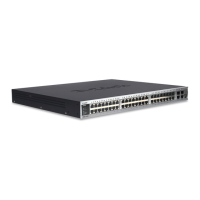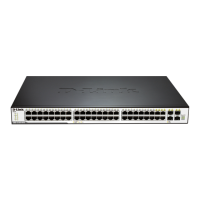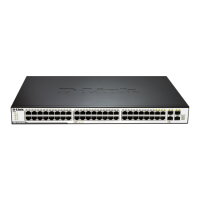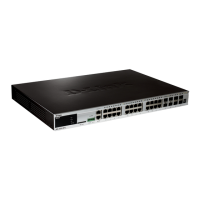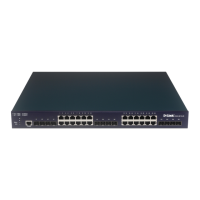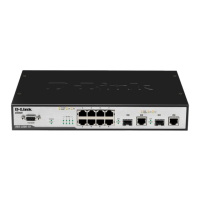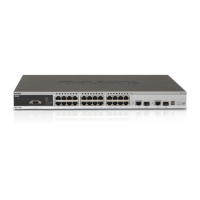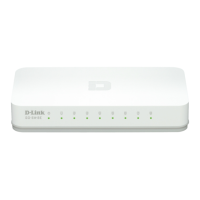Bandwidth Control
The bandwidth control settings are used to place a ceiling on the transmitting and receiving data rates for any selected
port. The transmitting rate (TX rate) and receiving rate (RX rate) can be configured separately.
To view this table click QoS > Bandwidth Control
Figure 5 - 3 Bandwidth Control window
The following parameters can be set or are displayed:
Parameter Description
From port / To port
A consecutive group of ports may be configured starting with the selected port.
Type This drop-down menu allows you to select between RX (receive), TX (transmit), and Both
This setting will determine whether the bandwidth ceiling is applied to receiving, transmitting, or
both receiving and transmitting packets.
No Limit
Use the drop-down menu to specify the selected port has limited or unlimited bandwidth.
Rate
This field allows you to enter the data rate, in Kbits per second, that will be the limit for the
selected port. The value must be a multiple of 64, between 64 and 1024000.
Click Apply to set the bandwidth control for the selected ports. Results of configured Bandwidth Settings will be
displayed in the Bandwidth Control Table on the lower half of the window.
Traffic Control
On a computer network, packets such as Multicast packets and Broadcast packets continually flood the network as
normal procedure. At times, this traffic may increase due to a malicious endstation on the network or a malfunctioning
device, such as a faulty network card. Thus, switch throughput problems will arise and consequently affect the overall
performance of the switch network. To help rectify this packet storm, the Switch will monitor and control the situation.
The packet storm is monitored to determine if too many packets are flooding the network, based on the threshold level
provided by the user. Once a packet storm has been detected, the Switch will drop packets coming into the Switch
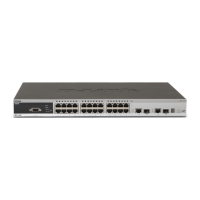
